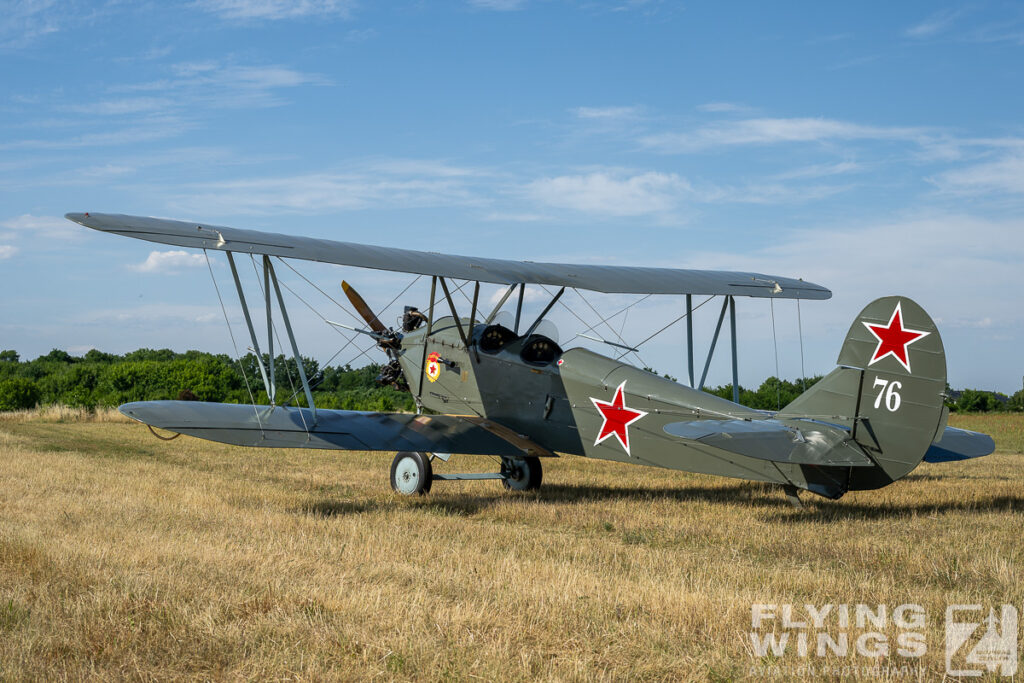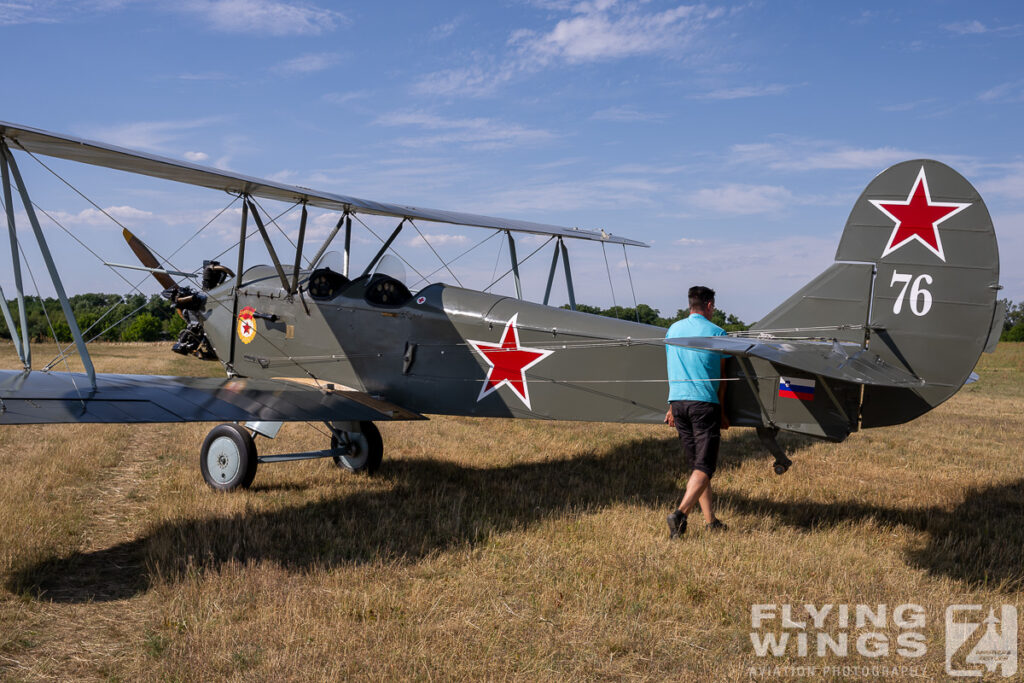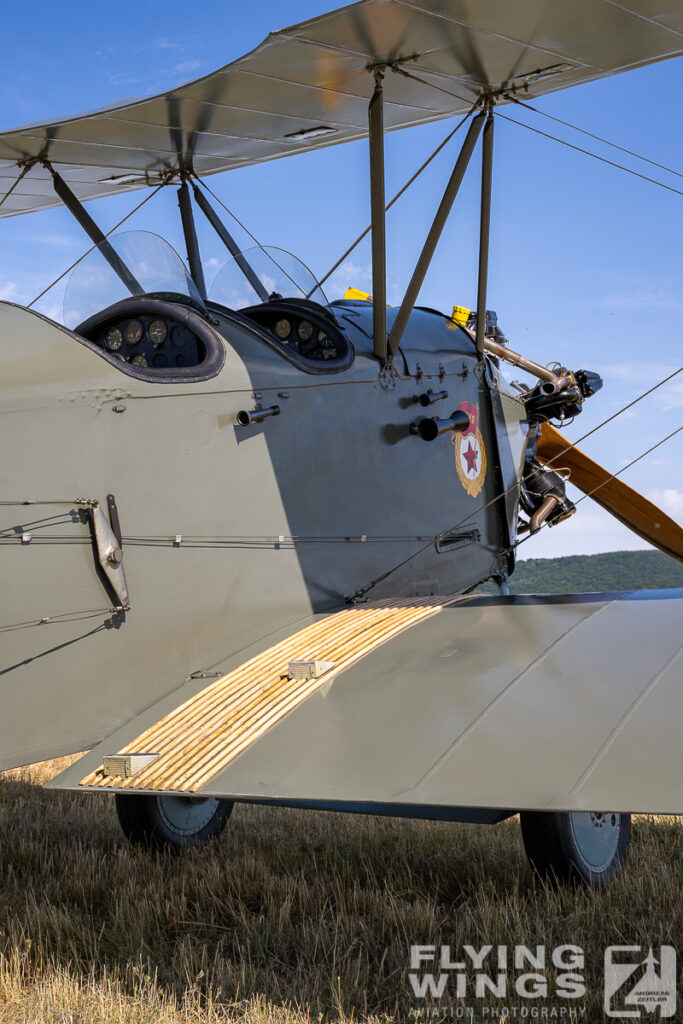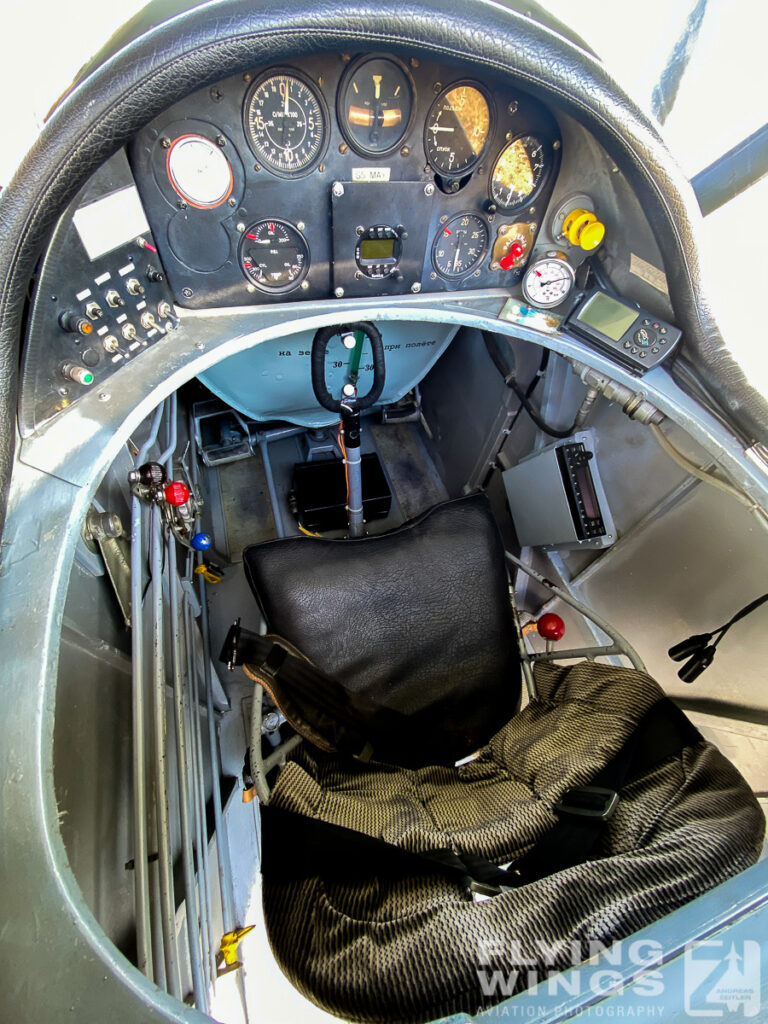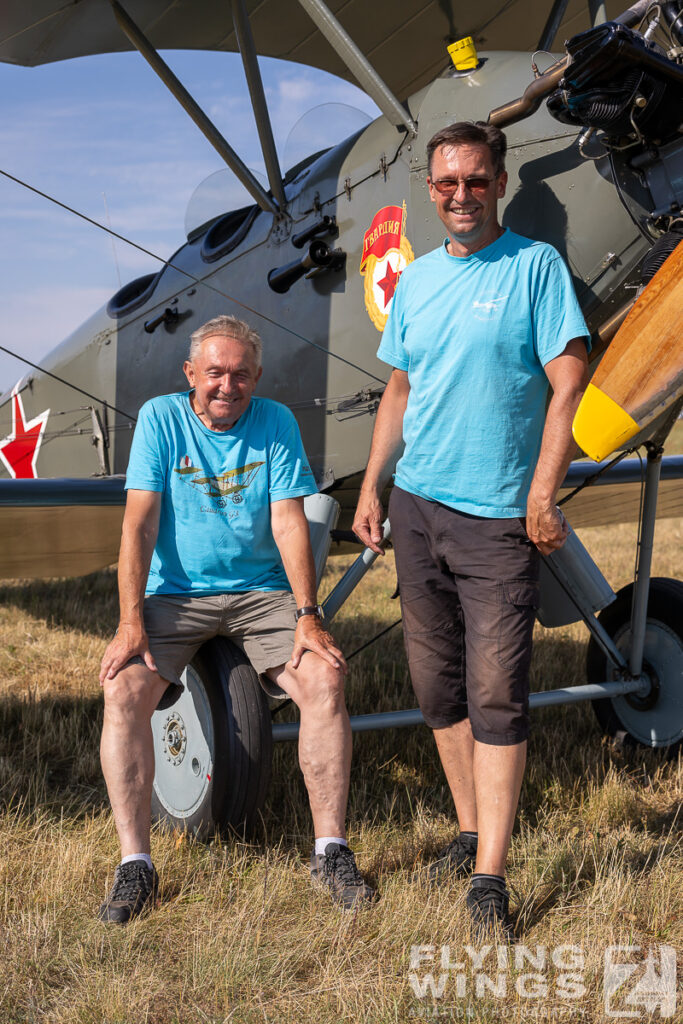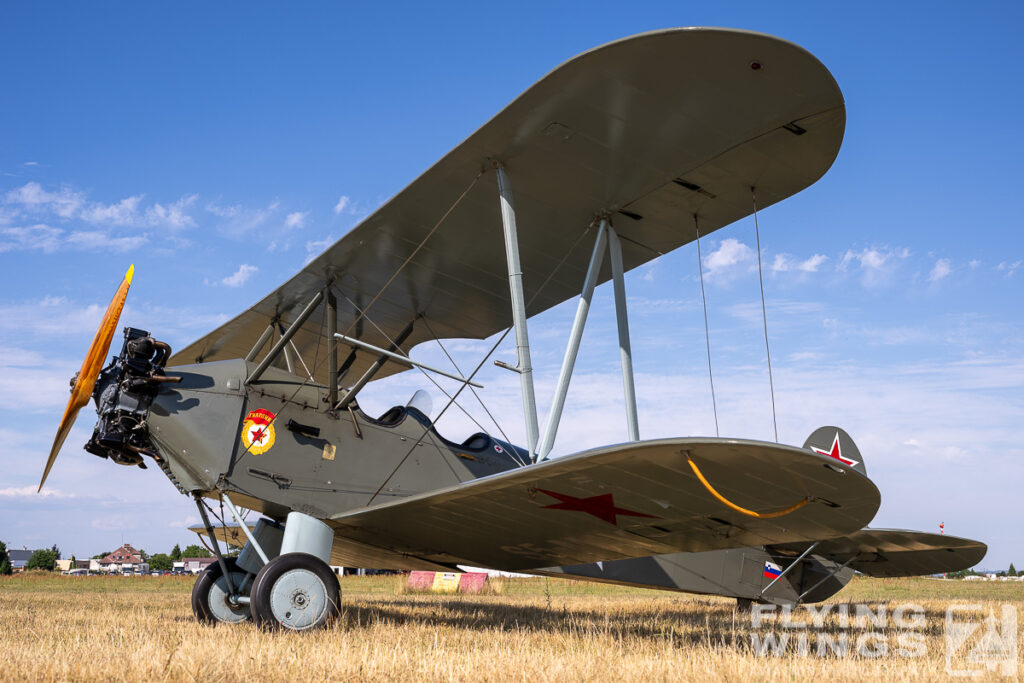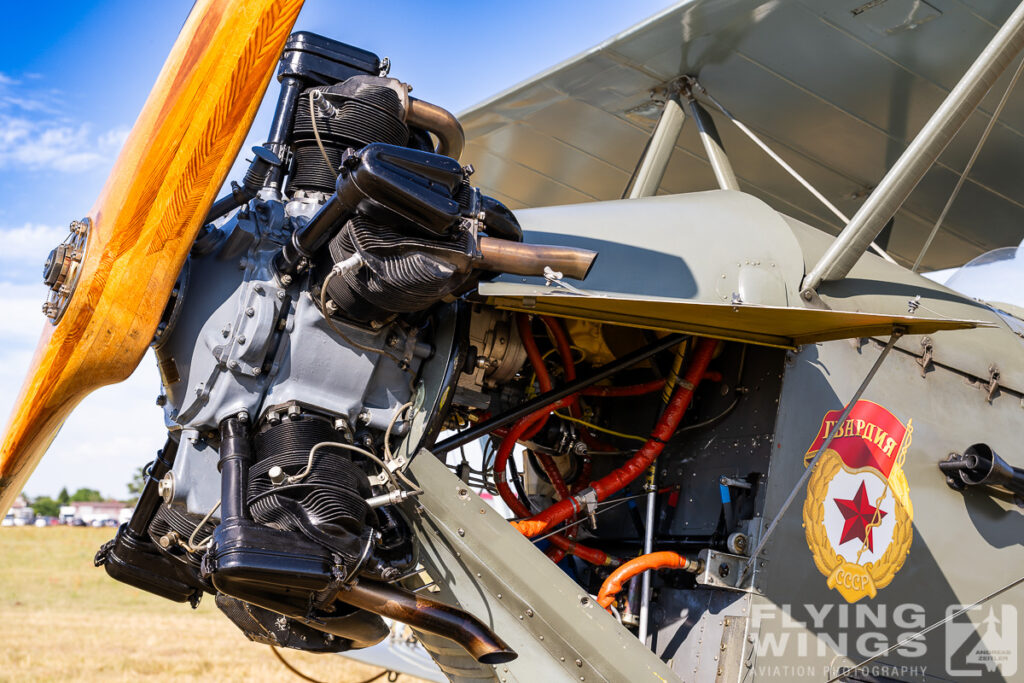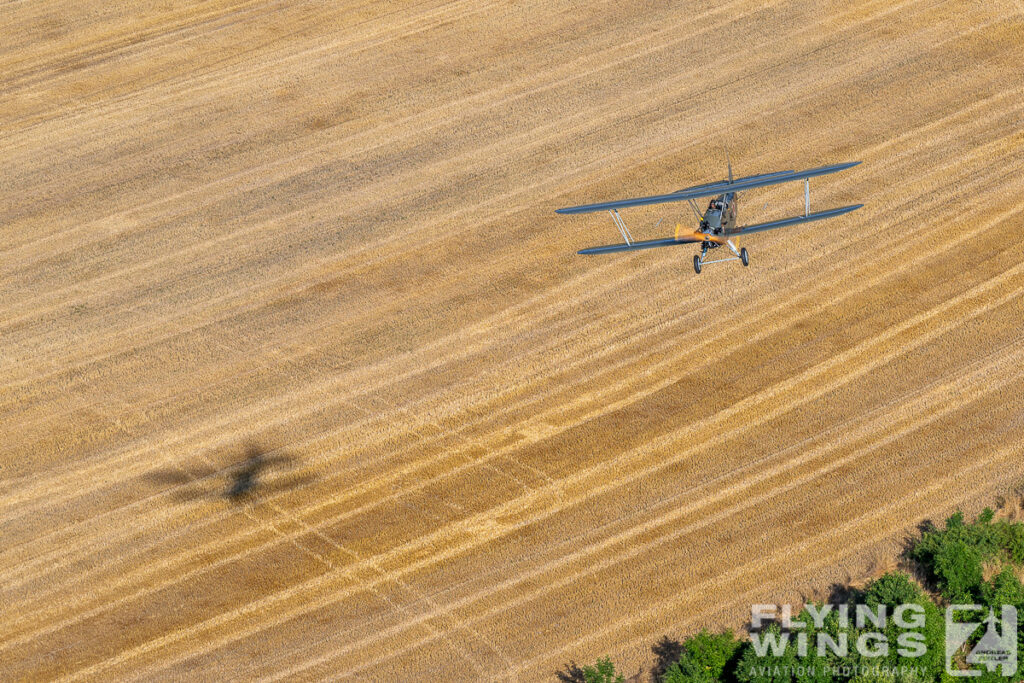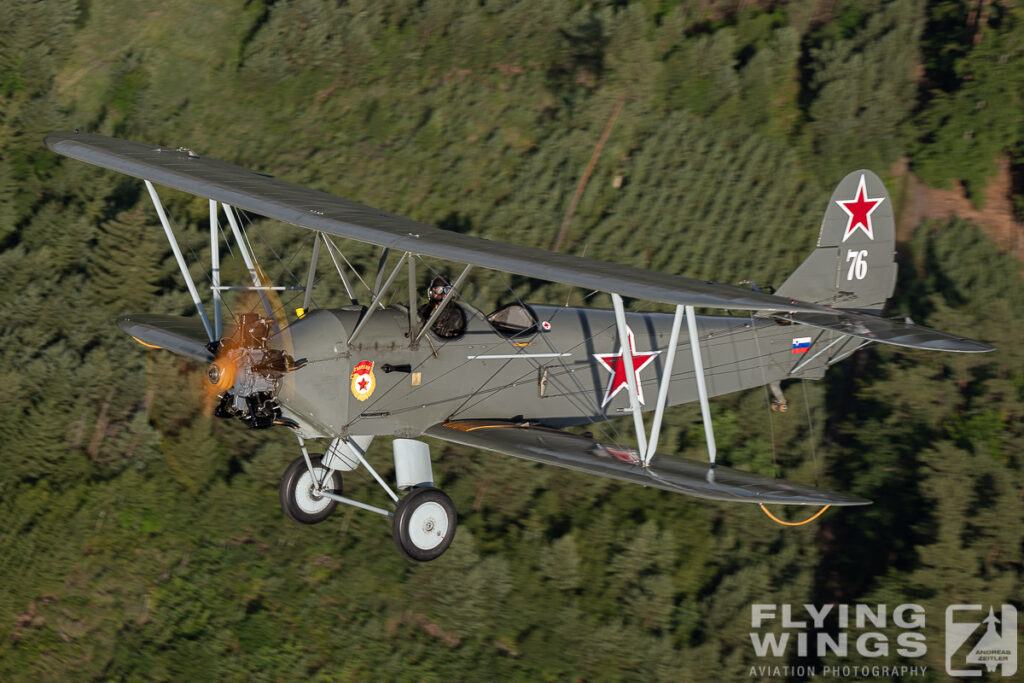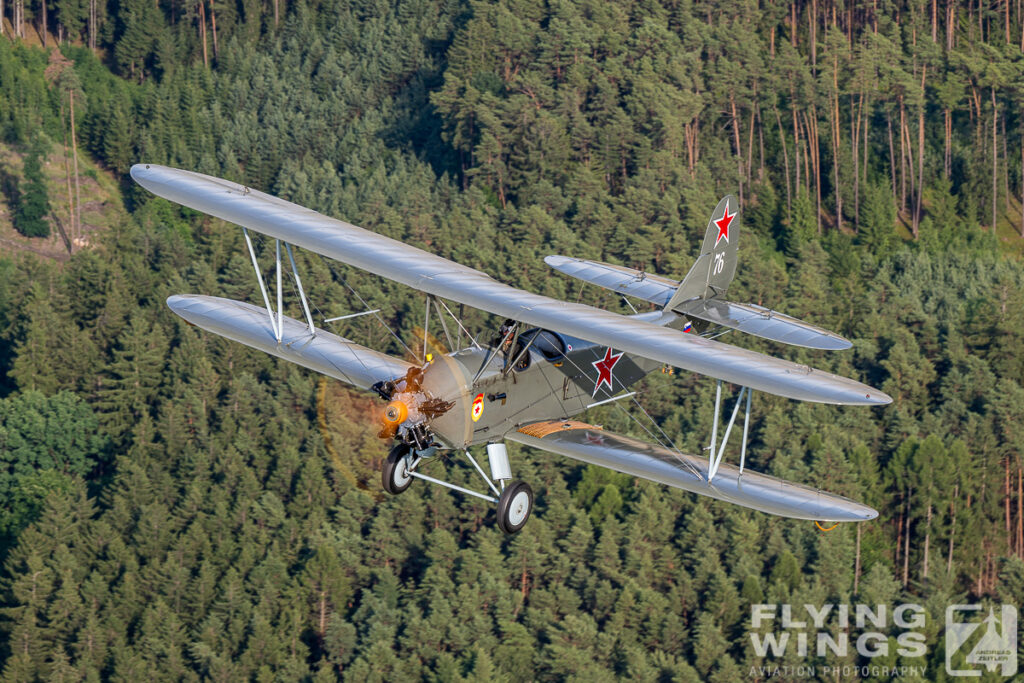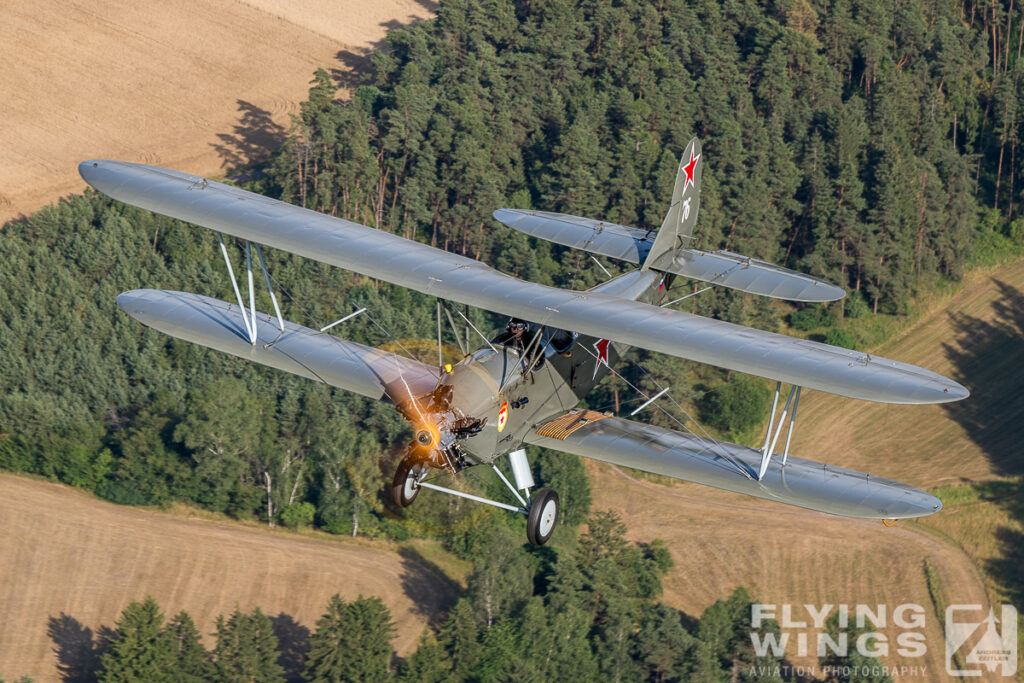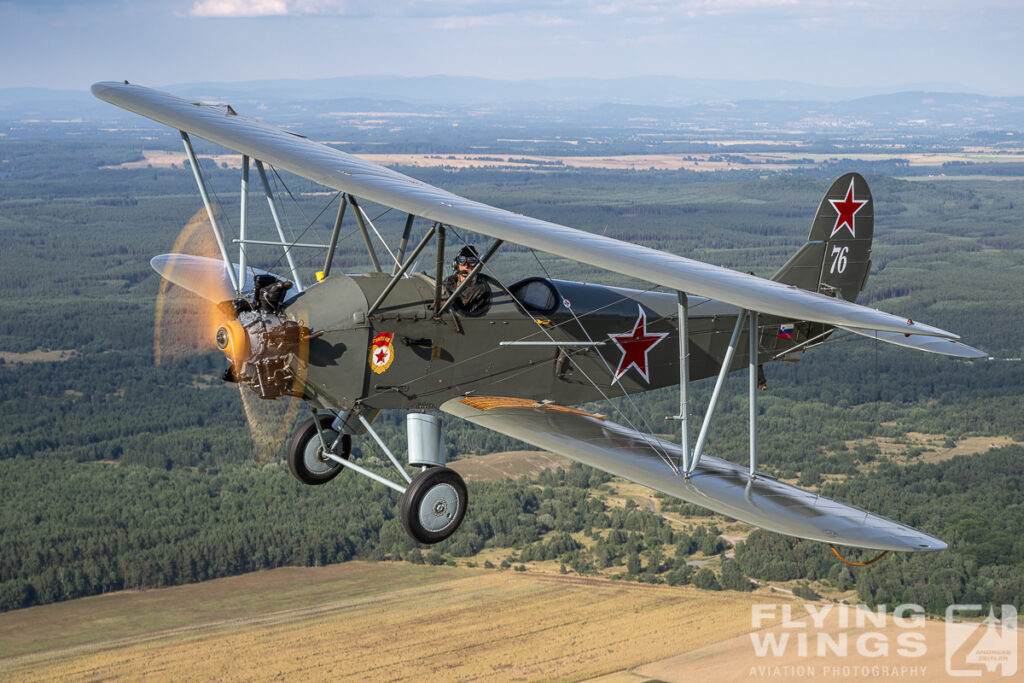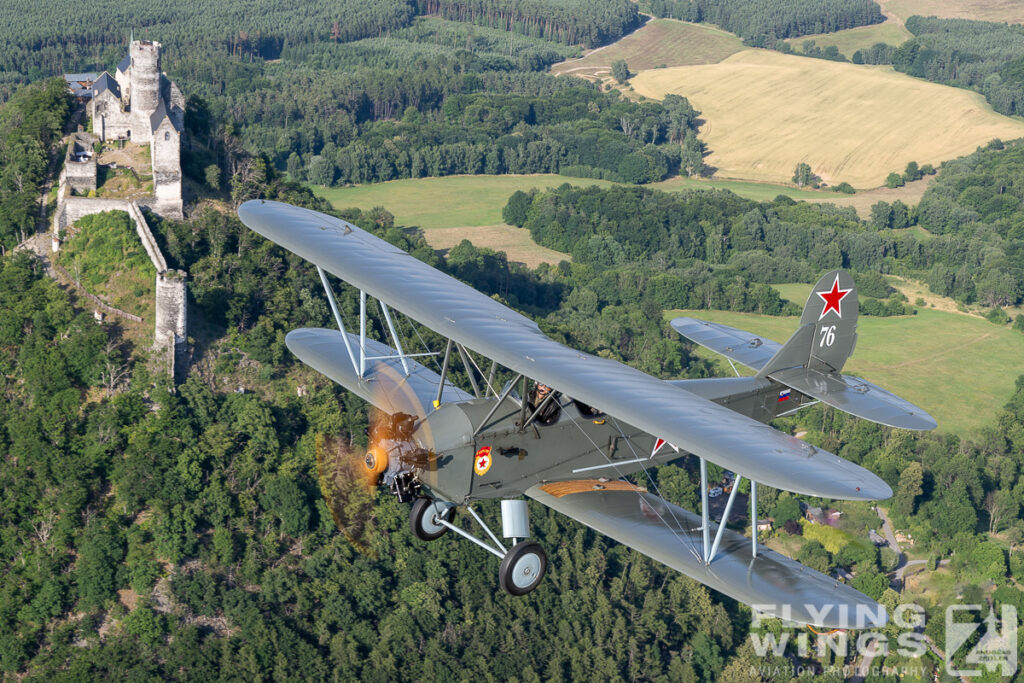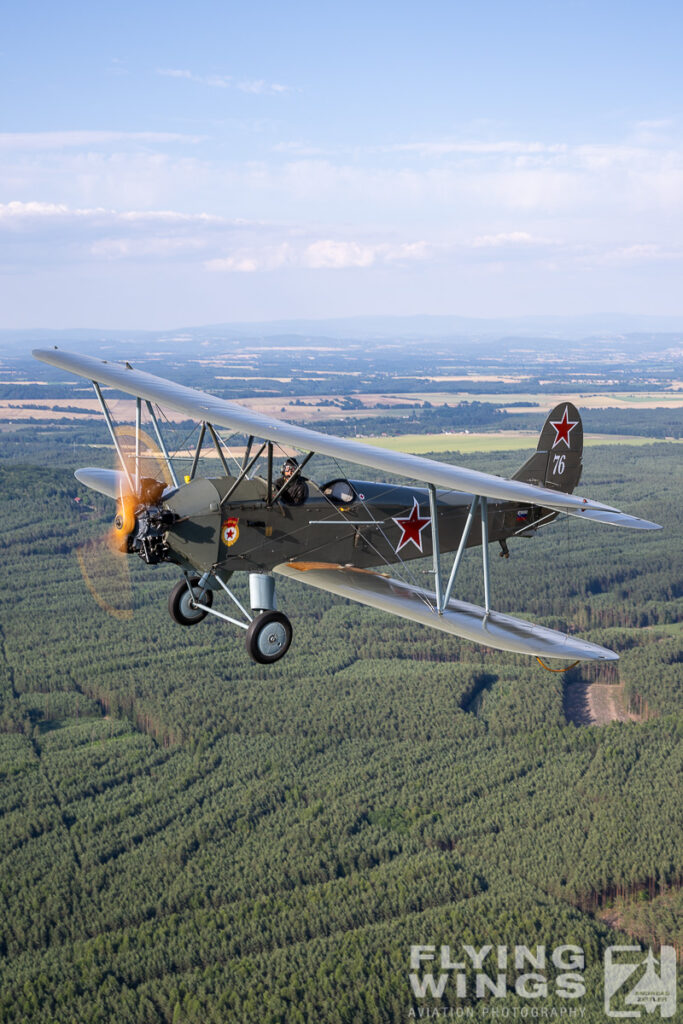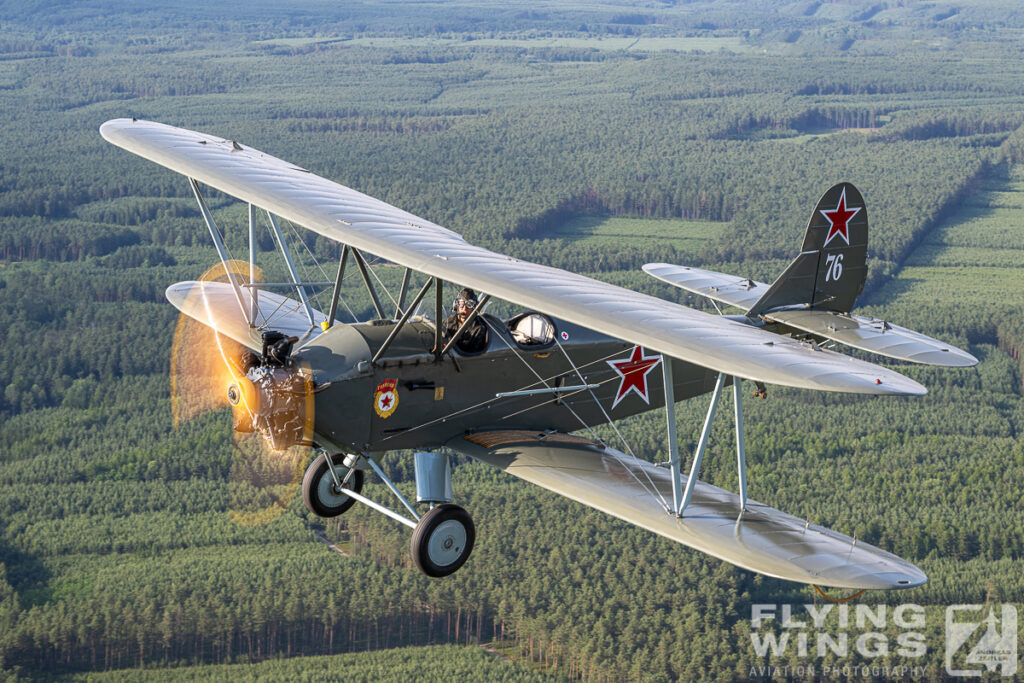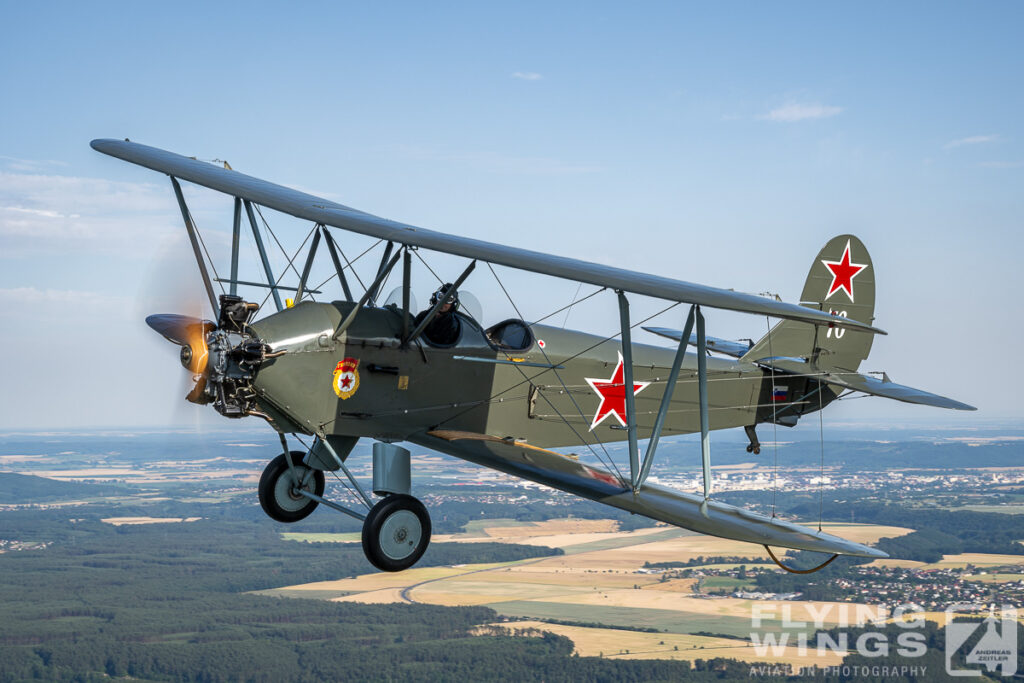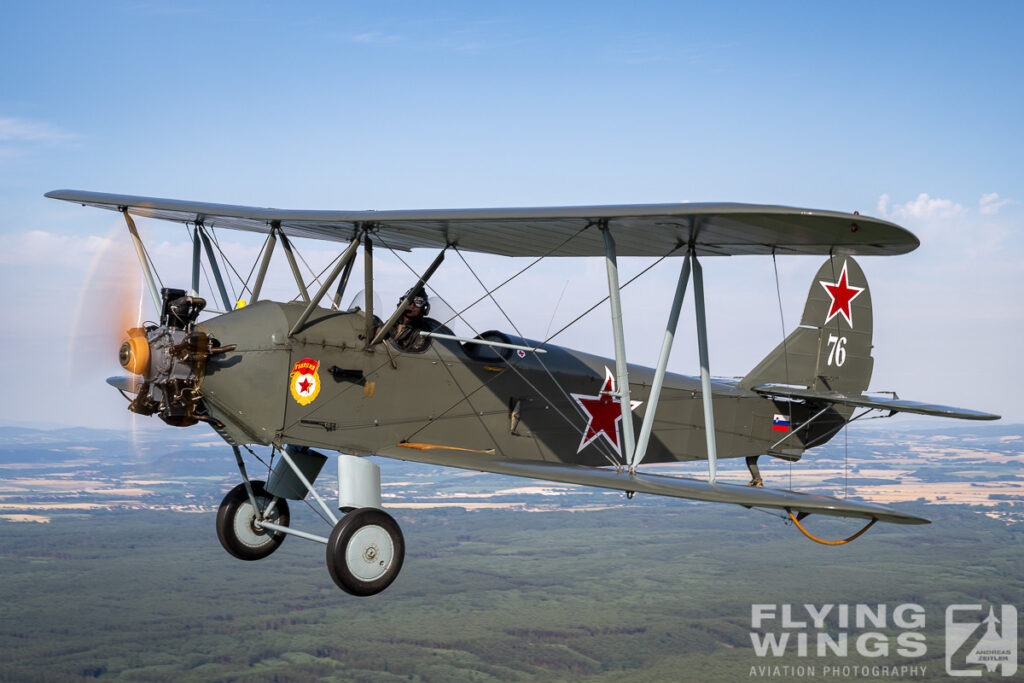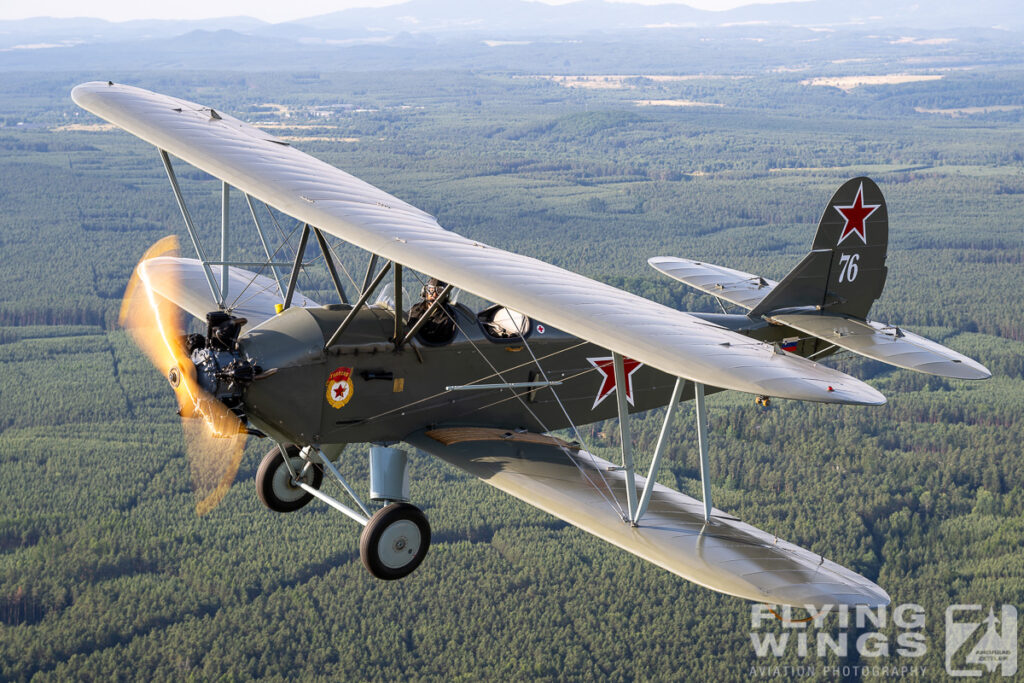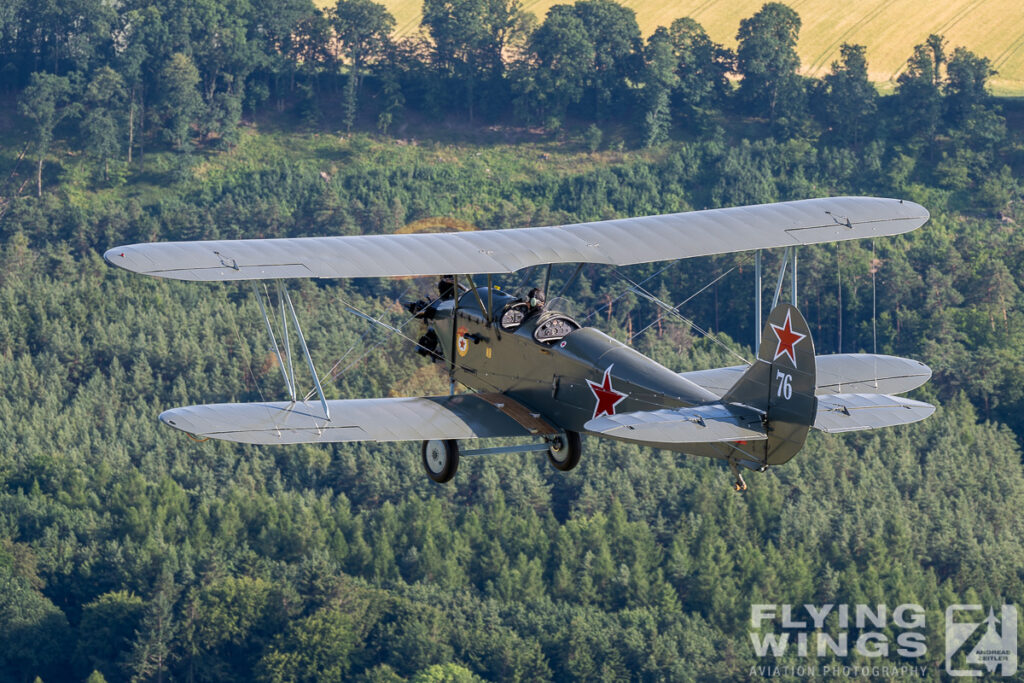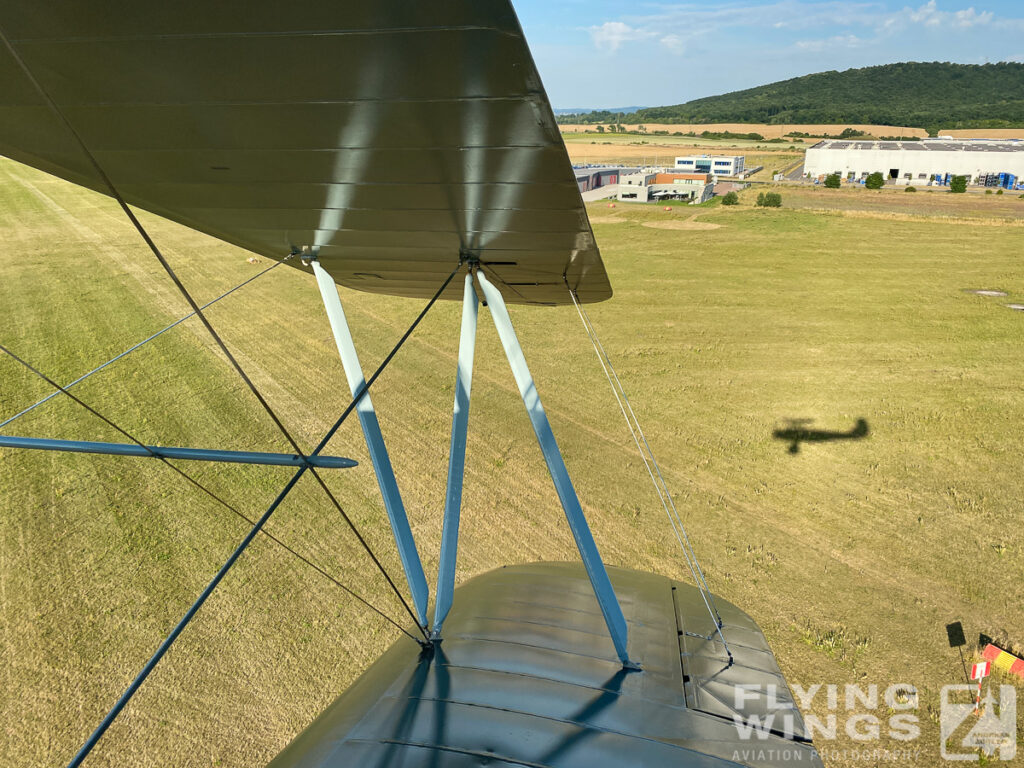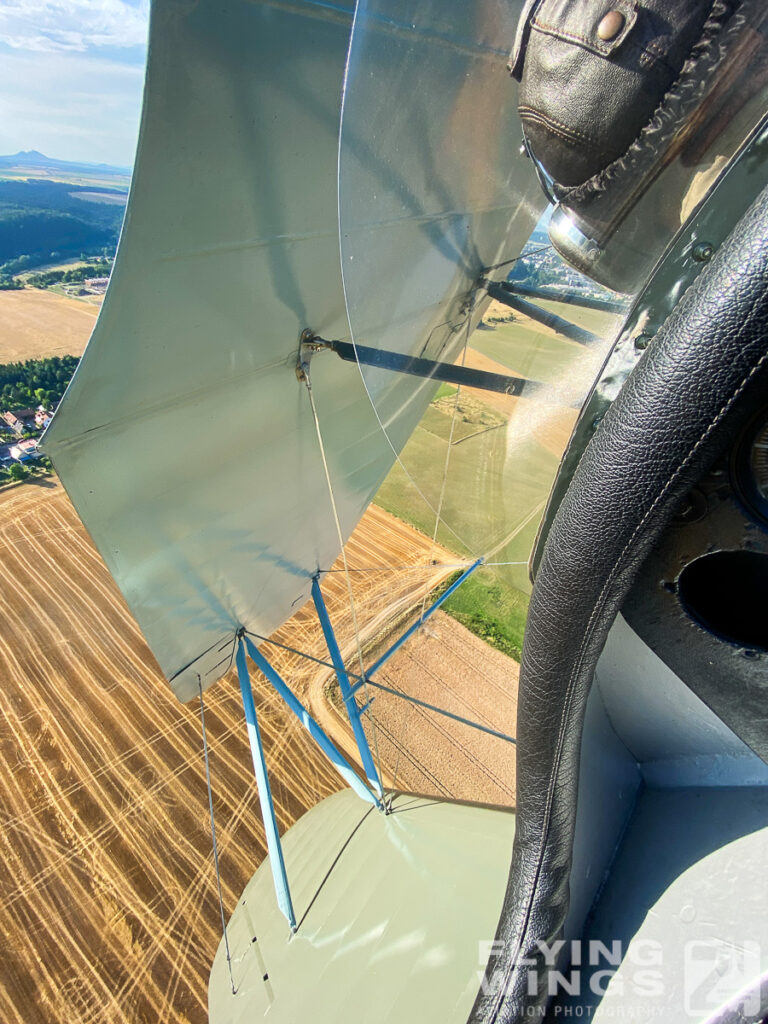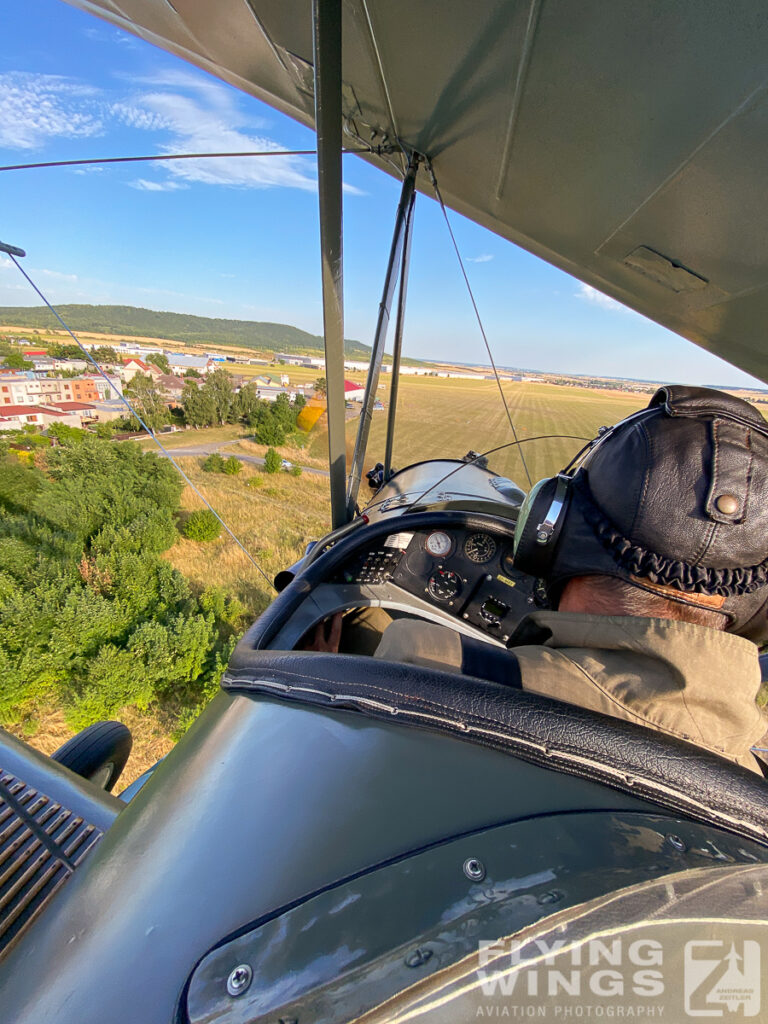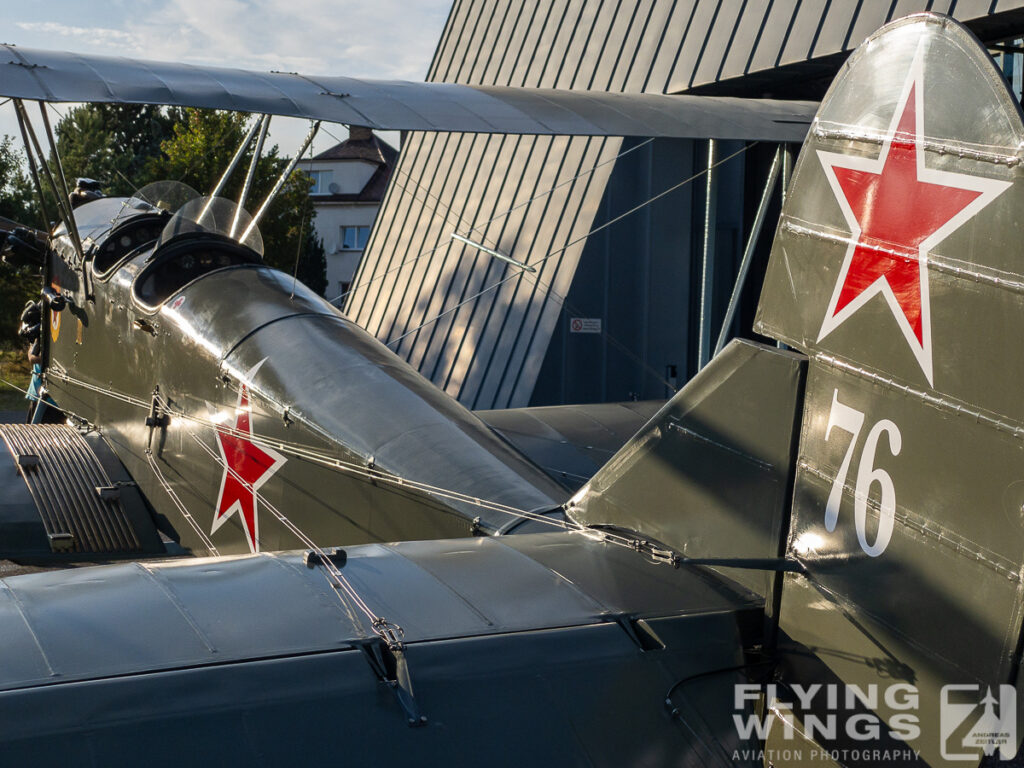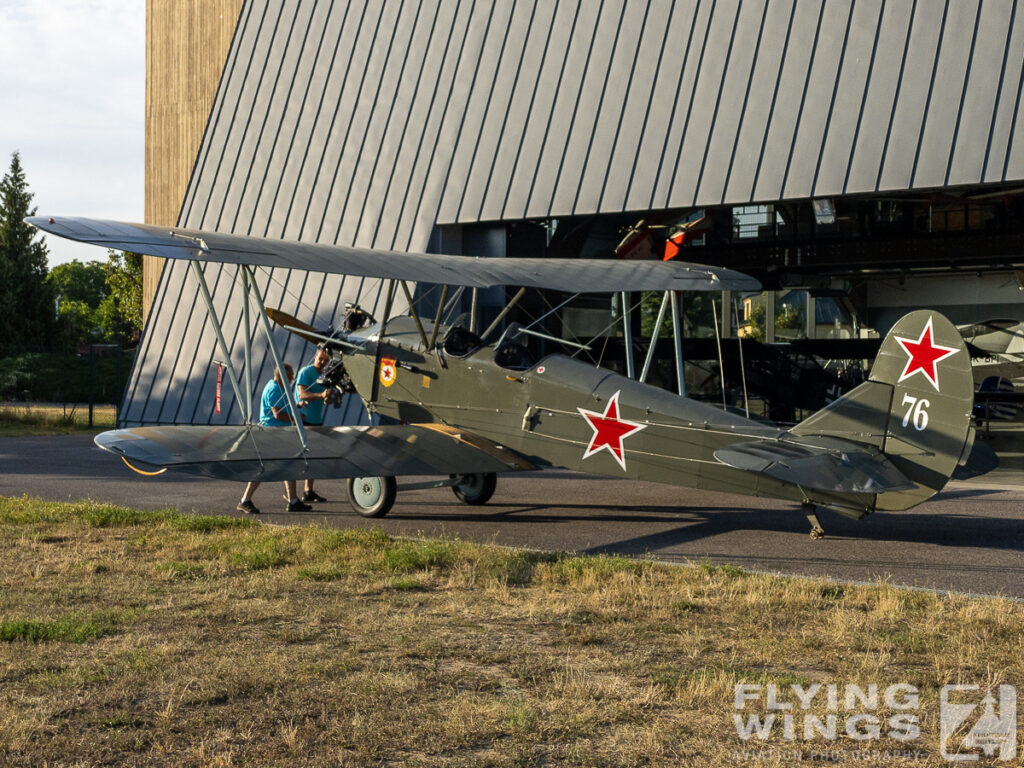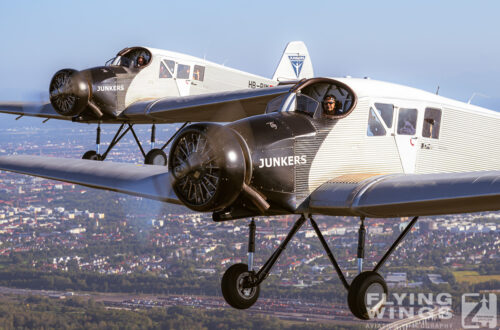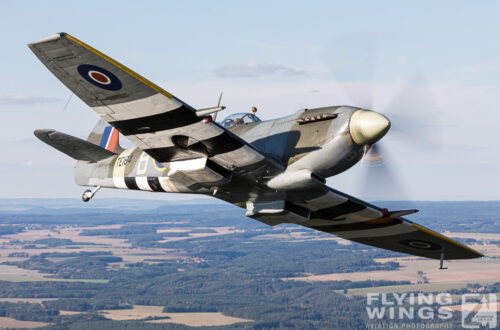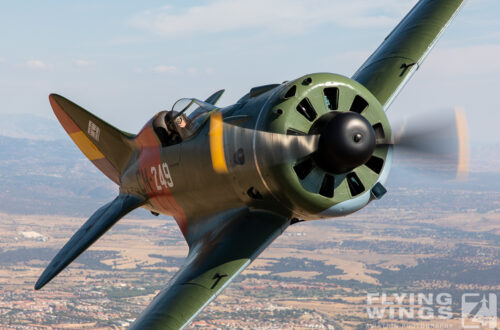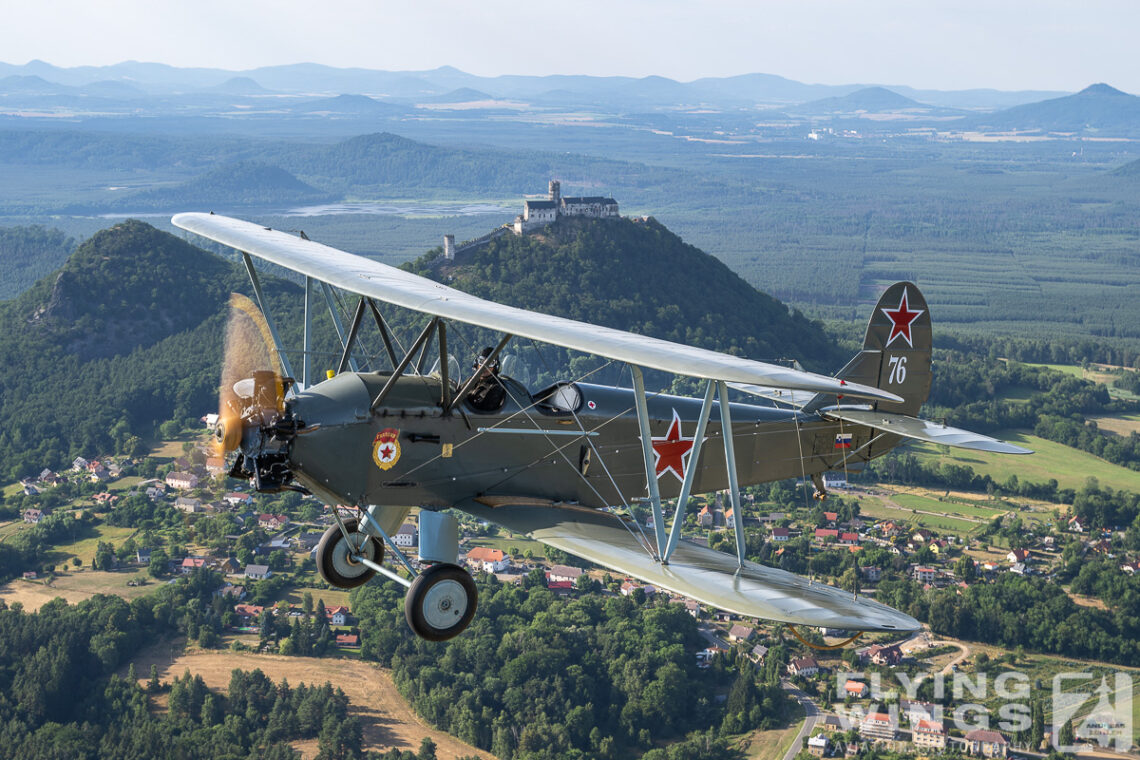
Po-2 – The Night Witches’ Biplane
Strap on and join me on a ride with the Polikarpov Po-2, the Russian biplane that was made famous by the “Night Witches”. I have had the chance to get a closer look at this impressive aircraft during a visit to Mlada Boleslav airfield, which is about 50km Northeast of the Czech capital Prague. At that small airfield and the nearby museum, Petr and Vladimir Handlik own and operate one of the very few Polikarpov Po-2s in Europe.
At a speed of 120 km/h, the Polikarpov Po-2 takes off at a height of a few meters over the crossed grass runways of the Mlada Boleslav airfield, almost 50 kilometers northeast of the Czech capital Prague. In tight curves, the acceleration forces push me firmly into the seat where the flight instructor originally sat, and later when used as a light bomber and ground attack aircraft, but also the observer and gunner.
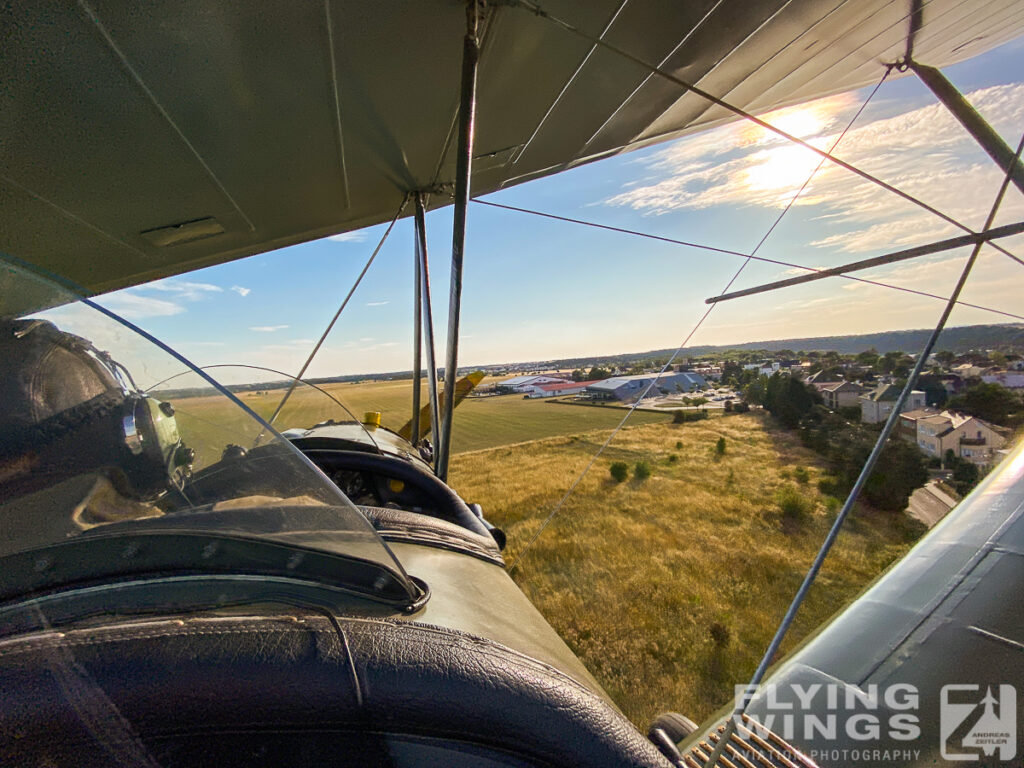
The background noise is impressive, because the distinctive clacking of the air-cooled five-cylinder Shvetzov M-11 radial engine can be clearly heard in the open cockpit. During the Second World War, German soldiers gave the machine the nickname “sewing machine”. Her arrival meant nothing good for the German ground troops at the front, because with her came mostly the “Night Witches,” the pilots of the 588th Night Bomber Regiment of the Soviet Air Force. The name comes from a special tactic. The pilots concealed their exact position in the dark by setting the engine to idle or even stopping it when approaching the target at high altitude. Engine noises could no longer be heard and the final part of the approach to the target took place almost silently while gliding. Only a faint whistle of the wind could be heard before they dropped their deadly load. To the opposing troops on the ground, it seemed as if the witches were riding through the air on their broomsticks.
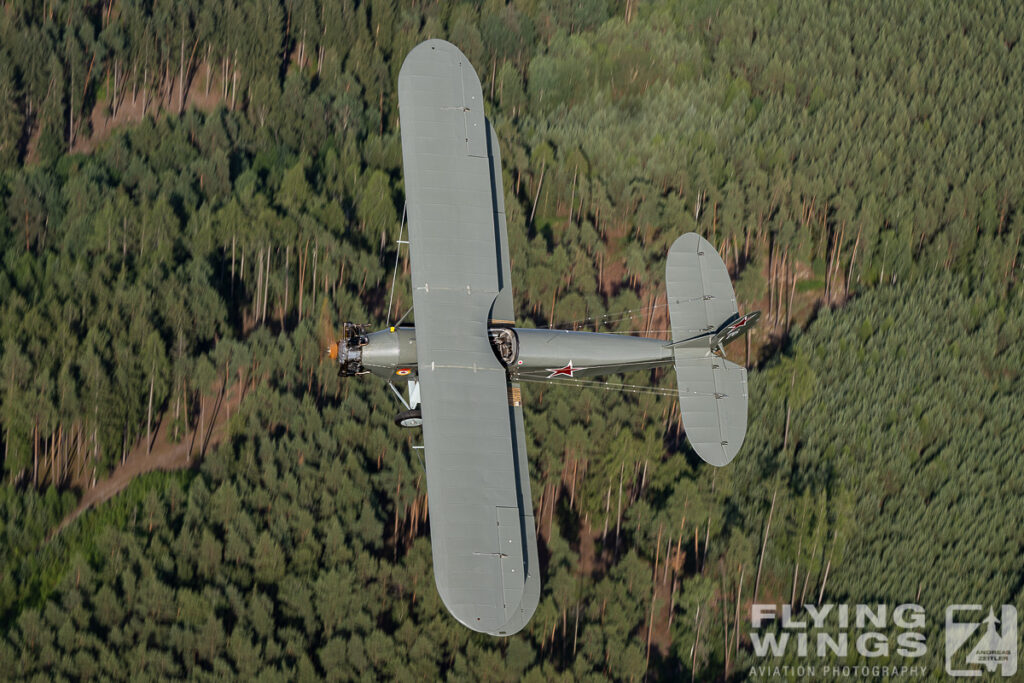
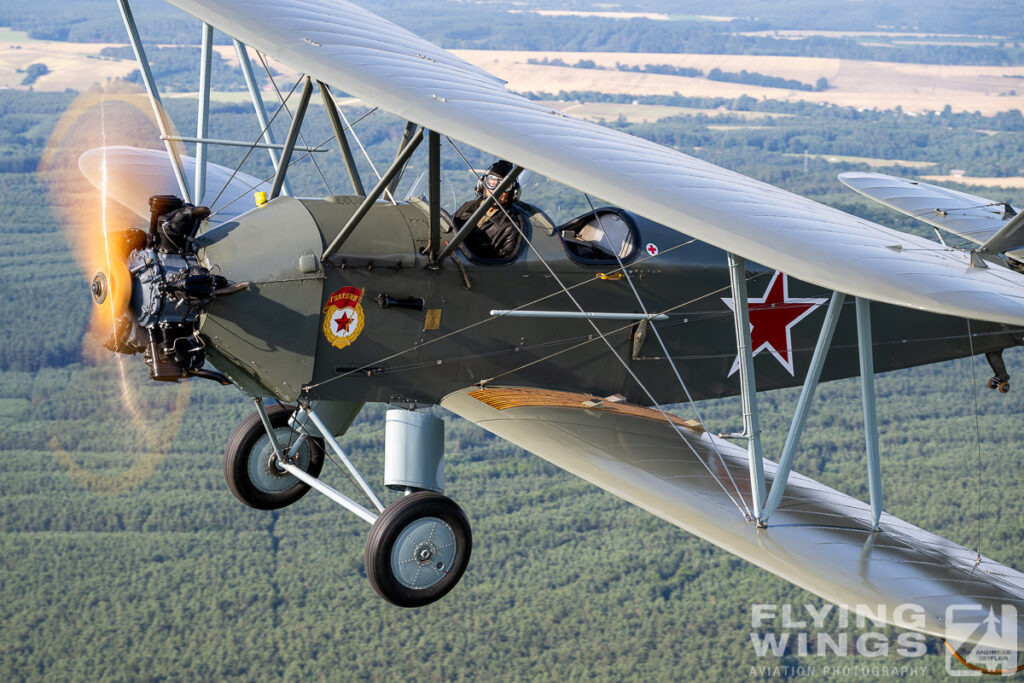
Petr Handlik, pilot and one of the owners of the aircraft, naturally refrained from such maneuvers during the instruction flight. There is also the option of controlling the double-decker from the rear seat. Not all instruments and control levers are there, but the basic information is still provided by the clear number of display instruments.
When you grab the control stick and make the first careful rudder movements, you immediately notice that you are controlling a large, stable machine and that you are moving quite a lot of mass through the air. This becomes particularly clear when there are gusts of wind and requires a lot of muscle strength to counteract them. The steering forces are also a good indicator of the speed and position in the air. With a minimum speed of just 65km/h, the Po-2 flies well and gives the pilot a lot of time to react. But it is also an old biplane with an open cockpit and therefore loud. The microphone is in the air as soon as you move your head to the side to look forward from the rear cockpit. And the ignition of the radial engine communicates to the on-board communication, causing a constant clicking noise in your ears. But at least it’s the warm evening air, the noticeable turbulence of which blows around your nose. In about a quarter of an hour we too are whirling over the place, and Petr’s joy in the Po-2 and his aerobatic experience are clearly noticeable. After landing, the necessary cleaning of the engine from the still warm oil and a short inspection, there is also the opportunity to talk about this rare biplane. There are only a handful of airworthy aircraft left in Europe. In addition to this there is one in Shuttleworth, also in Budapest and another at the Amicale Jean Baptiste Salis in La Ferté-Alais. There is also one in Germany at Hangar 10 on Usedom. And finally there is another machine in Split, Croatia. This one is completely white and also airworthy.
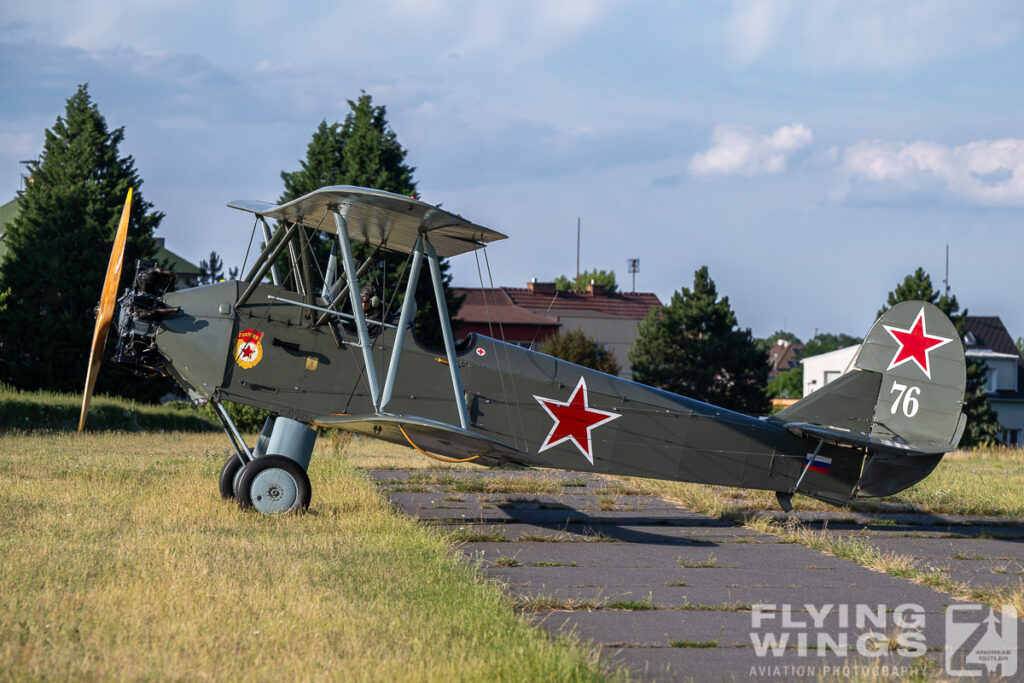
In 1928 the first Polikarpov Po-2 had its first flight. At that time still under its original name as U-2. The U stood for “Uchebnyy”, training or training. It was used by the military as a trainer aircraft, light bomber and medical aircraft, and in civilian use after the war as an agricultural aircraft. This is how it got its nickname “Kukuruznik” (“corn chopper”).” However, its main use was military, and with over 40,000 units built, it is the most frequently built biplane in the world. In 1944, after the death of its designer Nikolai Nikolayevich Polikarpov, it was renamed Po-2. Production only ended in 1954, when the last Polish CSS-13 licensed version left the factory. In the second half of the 1950s, her career was over in almost all countries of the then Warsaw Pact; only in Bulgaria was she officially in service until 1969. The longest user was probably Albania, where it was used by the military until 1985. Thanks to their good-natured flight characteristics, the former military aircraft were subsequently used by countless aviation clubs until the 1970s.
Back then, the ladies wanted to fly and fight for their fatherland. “That’s why they got this phased-out model, learned to fly with it, and finally carried out their night attacks.”
With a cruising speed of 125km/h and a top speed of 151km/h, its performance data is manageable. Nikolai Polikarpov set the focus on an aircraft that forgives many mistakes and is very pleasant to fly. This is impressively evident in the air, where the Po-2 can demonstrate its maneuverability. Tight curves with a bank angle of 60° or sometimes even up to 70° are definitely feasible for the large double-decker. The resulting acceleration forces during this maneuver are not to be despised and are far from what one would have expected when looking at the massive machine on the ground. This agility was vital for the night witches when they retreated from treetop heights after their attacks. And with a cruising speed well below the landing speed of the German fighters, they were also a difficult target for the Messerschmitt Bf109 or Focke-Wulf Fw190. From his own experience, Petr can very well understand why the Po-2 became the Night Witches’ aircraft: “Originally it was the U-2, a training aircraft. And it flies as if by itself. Of course it’s a big machine, you notice the weight and also the surface resistance. But I still find her to be very well-behaved. Back then, the ladies wanted to fly and fight for their fatherland. “That’s why they got this phased-out model, learned to fly with it, and finally carried out their night attacks.”
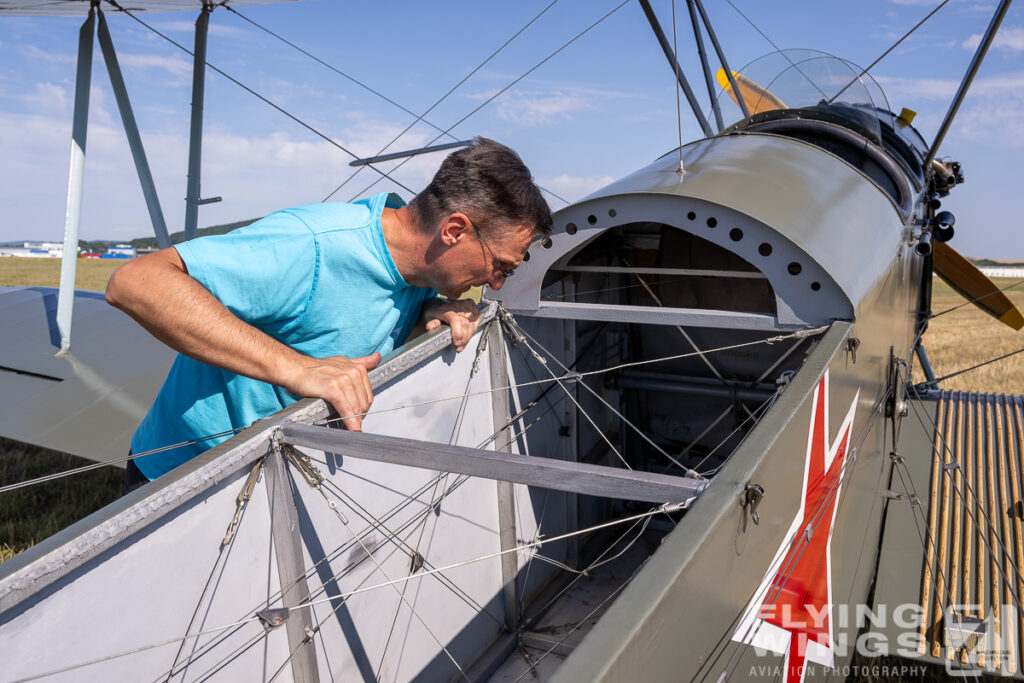
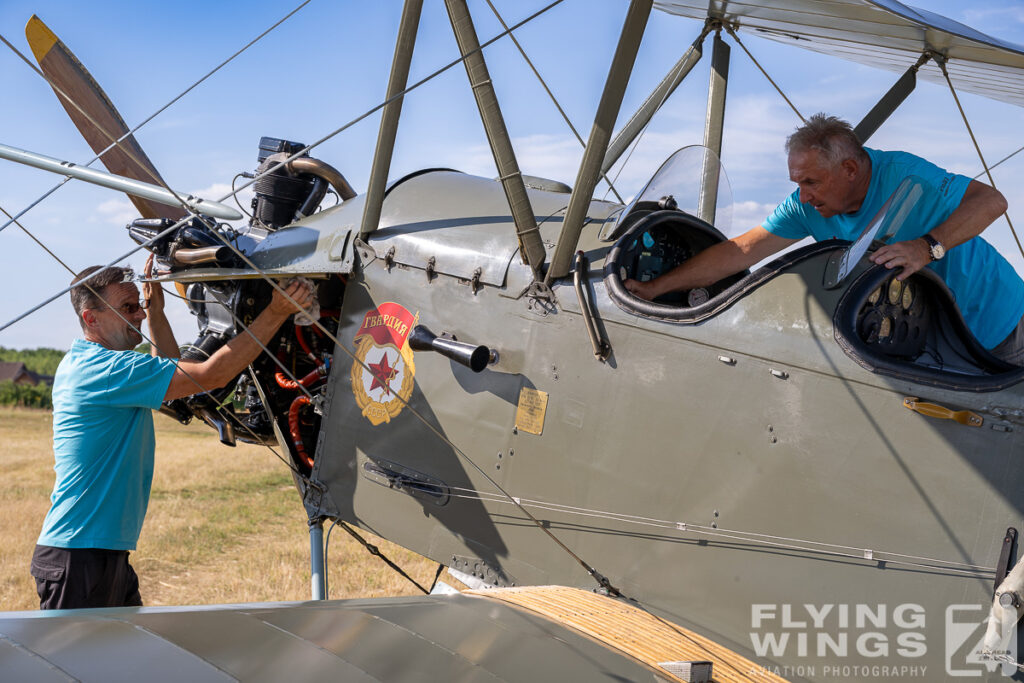
The take-off preparations for the Po-2 are typical of comparable aircraft from this era. The propeller is turned vigorously by hand to distribute the engine oil and avoid hydraulic shock in the lower cylinders. The fuel pressure is then built up using a vibration pump, and experience shows that when starting the radial engine it starts within two seconds. If the engine temperature is sufficient, checks on the eking and control surfaces are carried out. Then it is time to taxi towards the runway and get her airborne. The Po-2 accelerates ok, according to Petr, and if the speed is right, it’s off to the runway. “You have to accelerate slowly because the radial engine has a very large volume of 9 liters. “It takes a while to get up to speed,” is how Handlik describes the starting process, “but the machine picks up speed well and from a speed of 80 km/h you can take off; from 100 it is definitely in the air . When cruising, the tachometer is at 1500 rpm, and I can fly at a comfortable 110 or even 125 km/h.” However, things are different for him at events: “We put on a show for the visitors. I fly the machine low, with side slips, and we have also installed a smoke generator and have blank cartridges on board.”
And just as precisely as he handles the Polikarpov in the air, Petr Handlik is just as careful with it on the ground. There is a hint of fear in his voice when he gives precise instructions about which areas you are allowed to enter or even touch when entering the cockpit. Despite its Russian origins and its use as a training aircraft, it is not as robustly built as one might think. The purely wooden construction could be repaired in the field, but it also makes the aircraft fragile in many places.
Particular caution is required when boarding: there are special running boards on the wings and two grab handles on the left side. And when you get into the cockpit, the struts on the wings provide support, as does the lower area of the cockpit surround. A wrong grip and a greater load on other areas would be fatal, and a hole in the wooden paneling, which is only a few millimeters thick, would be unavoidable.
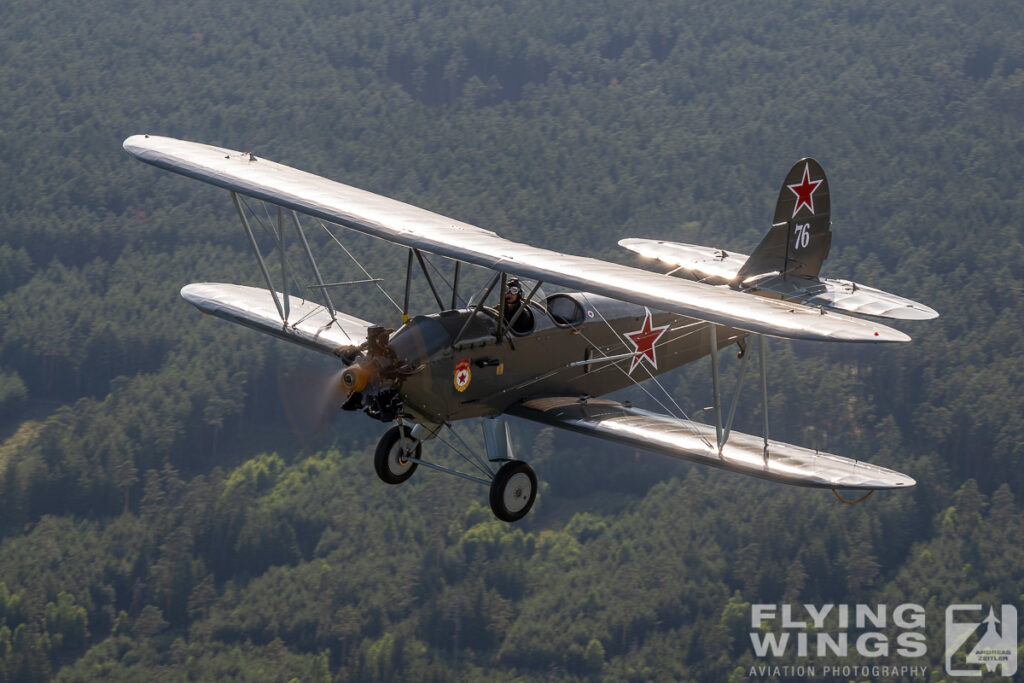
The Polikarpov was a dream for Handlik, and a labor of love for his father. The two of them already had a small biplane in their possession, a Bücker Jungmann, but an Antonov An-2 was too big for them. But the Po-2 as a middle ground was exactly the right fit, according to Handlik: “It is a large biplane, but manageable enough to be moved by two men.”
But it was also important to them that it was an original. Handlik had his eye on a few machines, but “with a replica, the magic is gone. But there was this machine in Slovenia, in perfect condition, we just had to buy it.” Two trips by car south of the Alps were enough to solidify the decision. And after the second tour, Handlik flew back to the Czech Republic with the Polikarpov.
After the purchase, the former owners came to Mlada Boleslav periodically to carry out annual maintenance. Handlik and his father learned so much that they can now do it themselves. And fortunately the effort required here is quite small compared to the size of the machine. This means that the two of them can fly it once or twice a month to keep it running.
Polikarpov is also a regular guest at events, but Handlik cannot ignore the current political situation either: “We used to go to air shows very often, but since Russia’s war against Ukraine it is of course less common”. It is clearly noticeable that a plane with the big red star is no longer invited as often. This year there were at least four events, including Pardubice and Hradec Kralove, two of the biggest shows in the Czech Republic.
The only thing that gives Handlik a lot of headaches is the supply of spare parts. “It is very difficult, contacts have broken down and the situation in Russia is completely at rock bottom. Luckily, a few years ago we stocked up on spare parts, including a replacement engine and special spare parts such as valves or candles. Luckily the rest of the machine is made of wood, which we can handle well, or classic mechanical engineering, so nothing specific.” He also owns an original Russian book for the engine and machine, which is of great use for maintenance. This at least ensures that the Po-2 can still be flown in Mlada Boleslav in the distant future.
Polikarpov Po-2 S5-MAY – S/N 0076 – A plane and its history
The Polikarpov Po-2 (S/N 0076) was built in 1937 and subsequently used by the Russian army. Exact details about their use during World War II are not documented or have been lost. It was not until 1945 that her life story could be reconstructed. At this point the U-2 was already referred to as Po-2. The renaming was in memory of its designer Nikolai Polikarpov, who had died the previous year, and also in accordance with the new Soviet requirement to name aircraft after their designers.
After the Second World War, 82 Po-2 machines were handed over to the Yugoslav army. This was a personal gift from Josef Stalin to the then ruler Tito. Among these machines was the 0076. In the still young Yugoslav Air Force it was given the identification number YU-CWJ. Old photos show the biplane in Yugoslavian livery and with an unusually long front section. A Czech Walter Minor 6-III in-line engine was installed underneath, replacing the original but presumably defective Shvetzov M-11D.
After several years in the air force, it was handed over to the Koroski Aeroklub in Slovenj Gradec in 1967 and operated in civilian service. This was done under the new identifier YU-CMY. In 1975 the machine was no longer airworthy and was put into storage. She disappeared from the scene for a long time.
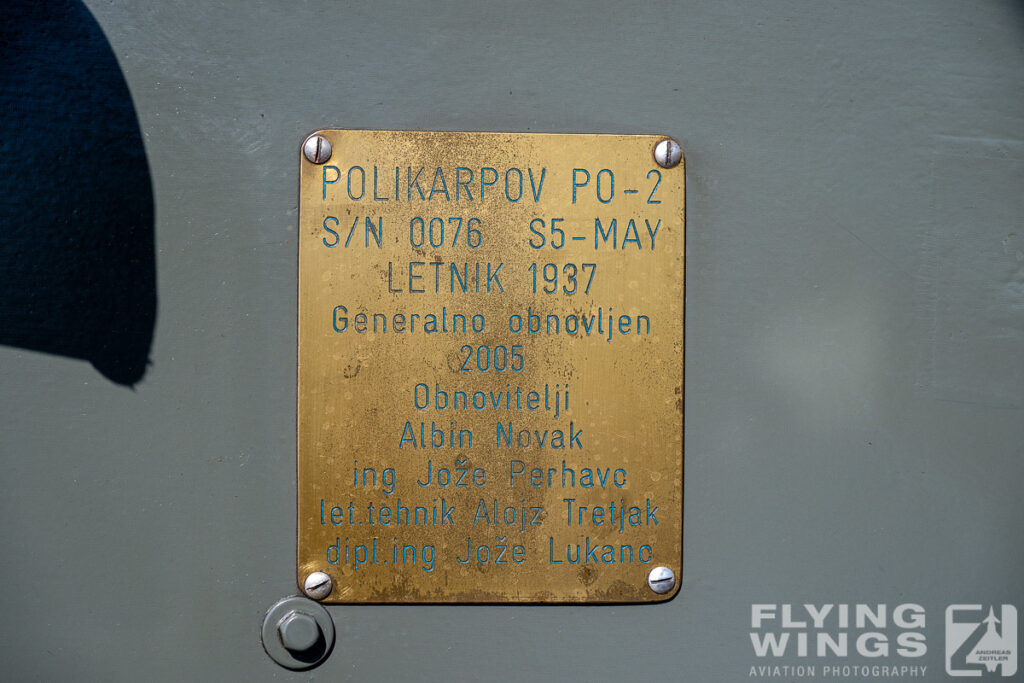
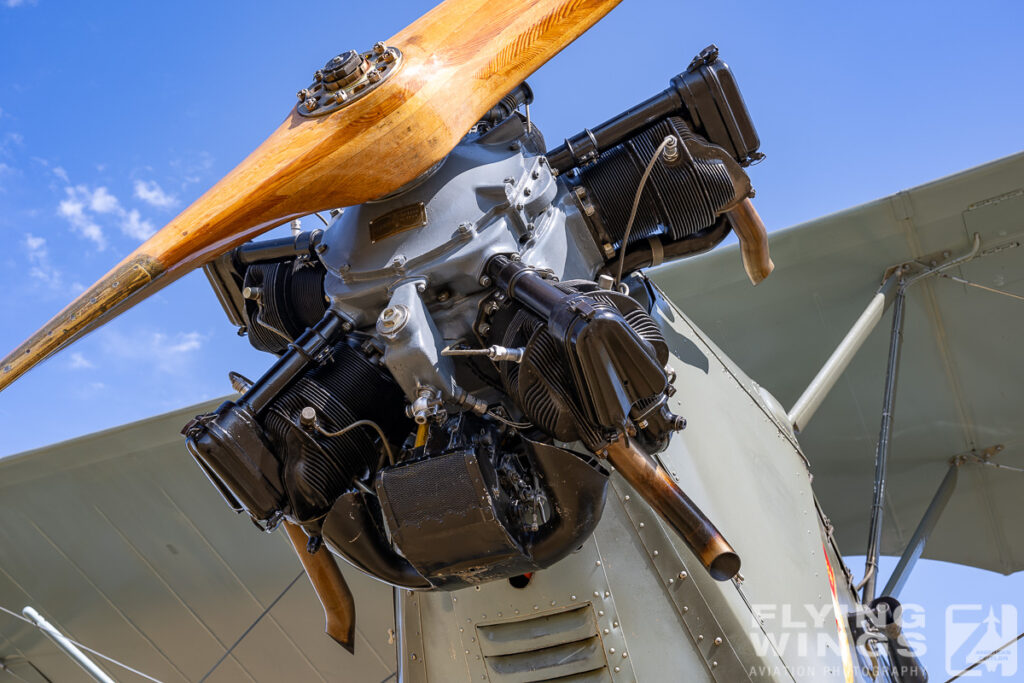
It was only rediscovered 30 years later. In 2004 and 2005, Albin Novak, Jose Perhavc, Aloiz Tretjak and Joze Lugano took on the reconstruction. The aircraft was rebuilt true to the original and again received a Shvetsov radial engine, but this time in the more powerful M-11FR variant with 160 HP. The colors of the Yugoslav Air Force were applied in a historically correct manner, and another first flight took place in May 2005 under Slovenian registration and the identification S5-MAY. The aircraft was presented by Aloiz Tretjak at airshows for 9 years until it was sold to its current owners Petr and Vladimir Handlik in Mladá Boleslav in May 20014.
The following winter the machine was completely overhauled, it was given the original tires again and also a Russian paint job. Since then it has been part of the collection of the Metodej Vlach Aircraft Museum in Malta Boleslav and is a regular guest at events in the Czech Republic and its neighboring countries.
Mlada Boleslav-based Polikarpov Po-2 “Kukuruznik” – Photo Gallery



